In addition to the four-player cooperative campaign demo that Epic Games was showing off for Gears of War 3 at E3 2010, it announced a new multiplayer mode that casts up to five players in the role of the humanity’s bane, the Locust. All it took was one little run through the new Beast Mode. Little I’ve seen at E3 this year can compete with the goofy insanity of steering a Ticker towards a Gear and then blowing up in his unsuspecting look.
The long answer involves a lot more details, so we’ll start with the general structure of Beast mode. Similar to Gears of War 2’s Horde mode, players face off against increasingly difficult waves of human enemies while gaining access to increasingly powerful Locusts. Unlike Horde mode, the game does not end when all the players die. Rather, each round has a timer, and if it runs out before all the humans have been exterminated, the Locust lose. Killing the surviving humans not only extends the timer slightly, it also earns tokens for the Locust players. Tokens are the currency that players must use anytime they want to respawn. Coming back as a Ticker sets you back a single token, while Boomers cost somewhere north of 30 tokens. The demo we played supplied us with essentially unlimited tokens, so we didn’t delve into spending and saving tokens in a strategic fashion. Still, it’s clear this will be one of the many tactical considerations crucial to Beast mode victory.
Choosing which type of Locust to spawn as is the other big tactical consideration. Each type has its own unique strengths and weaknesses, weapons, and token cost. Here’s a rundown of the current roster, packed with as much information as we could glean from our time with Beast mode (including some questions we weren’t able to answer):
Ticker: (1 token) These little devils are the fastest and smallest Locust but also the most vulnerable and short lived. They are suicide bombers, plain and simple. Not meant for a direct assault, Tickers thrive when you skitter around in a flanking maneuver and catch the humans while they are dug in behind cover. The three-second timer gives savvy enemies time to dodge away, but if you can get close enough, you won’t be the only one exploding in a glorious burst of gore.
Wretch: (Maybe 4 tokens? Not quite sure.) Another quick, yet vulnerable species, these loping beasts have the advantage of being about to take cover (and possibly climb on walls?). Get them close to a human to unleash some vicious clawing melee attacks.
Serapede: (10 tokens) This new creature slithers along the ground and looks a bit like a large, broad-bodied centipede with tall antennae. While it can be a bit awkward to maneuver, its electric zapping attack momentarily stuns enemies and does a good bit of damage. Also, it apparently has the ability to rear up on its hind legs and survey the battlefield, though we couldn’t quite get that to work in our time with the game.
Kantus: (8 tokens) Tall, robed Locust that occupy an elite position in Locust society, the Kantus play a unique role in Beast mode. Though they are armed with a Gorgon burst pistol that can deal close-range damage, their most valuable skill is the ability to resurrect downed teammates from afar. When a Locust goes down, a Kantus need merely look in the direction of its wounded ally to see the familiar get-back-on-your-feet prompt. Once activated, the Kantus and its target glow brightly for a few seconds as the Kantus works its mojo, and then the target Locust is good to go. The Kantus’ height, bright glowing resurrection animation, and inability to duck behind cover make it a big target, so players are advised to embrace their support role and stay away from the front lines.
Armored Kantus: (more tokens than a Kantus, not sure of exact number) While this character is pretty self-explanatory, there are a few apparent differences worth noting. First off, they wield two Boltok pistols that are slower to fire than the Gorgon burst pistols but do more damage over a longer effective range. Second, while they are armored, they seem to be more nimble than their robed counterparts.
Grenadier: (8 tokens) Tougher than your average Locust drone, Grenadiers look like stock soldiers but pack a bit more of a punch. Armed with Gnasher shotguns and frag grenades, Grenadiers play very similarly to the human Gears we all know and love, right down to the brutal finishers. Instead of curb stomps, however, Grenadiers can rip the arms off of their downed enemies and beat them mercilessly into oblivion. This move offers the same kind of morbid thrill as the Lancer’s chainsaw kills. Arm ripping and flailing leaves you similarly vulnerable to enemy fire, but you do earn more tokens for every blow you land.
Savage Boomer: (36 tokens) The first of three varieties of Boomer, this beefy fellow sports a weapon new to Gears of War 3. The digger gun shoots a burrowing projectile that cruises across the battlefield, scooting under cover positions easily and popping up to (hopefully) explode in the enemy’s face. Taking aim with this gun displays a trajectory arc similar to that of a grenade throw, though much shorter. The arc shows where the projectile will hit the ground, then draws a straight line to where it will pop up and explode. All Boomers are big and slow, though they can all do a fair approximation of the roadie run in order to get clear of trouble or advance on the battlefield.
Grinder Boomer: (45 tokens) Armed with mulchers and bad attitudes, these Boomers use their high fire rate to perforate any human in the open and suppress those lucky enough to be behind cover. Their heavy machine guns are prone to overheating, but players can press the right shoulder button to take a moment to cool things down at the risk of increased vulnerability.
Mauler Boomer: (42 tokens) Perhaps the most visually formidable of the Boomer trio, the Mauler wield a spiked shield and a massive flail that can pulverize any enemies unlucky enough to be caught nearby. His ability to take damage and move while protected by his shield make the Mauler an ideal tank (read: damage magnet). His menacing bulk makes humans fear his approach, and any who don’t flee to a safe distance are doomed to suffer from the serious area damage that his flail can inflict.
Berserker: (40 tokens) This lovely lady is the speedy, hulking brute we all remember from the previous games in the Gears series. Able to sprint at a terrifying rate, Berserker can make mince meat out of any humans it manages to encounter. In order to mitigate its awesome power, the screen narrows to an oval as the edges are obscured by a wobbly black effect. Steering these beasts is also a tricky proposition, but the risk pays off anytime you manage to get near a hapless human. Squish.
**It’s worth noting that the Locust were organized into four tiers, each with a number of unfilled slots, leaving the possibility open for new, unannounced creatures. Also, keep in mind that we didn’t have to worry about spending tokens, so the above numbers merely serve as a relative indicator of the weight given to each species.
Of course, the Locust aren’t the only species in Beast mode, and the humans boast a mild degree of diversity as well. The weakest humans are the Stranded, those poor souls not able (or not willing) to make it to the safety of Jacinto and the embrace of the COG. Though armed, the Stranded will flee from advancing Locusts and are particularly susceptible to Tickers. The second tier of human was described to us as the “redshirts” from the COG army (a reference to the expendable officers in Star Trek).
The third and final tier are the heroes of the Gears of War games themselves, folks like Dom, Baird, and Cole Train. These guys are much tougher to kill and use every environmental advantage they can. While the Stranded put out armored scarecrows to lure the Locust in, the Gears activate automatic turrets and laser tripwires to keep you at bay, and they man the mounted-gun emplacements that can do some serious damage to careless Locust players. They even busted out the Hammer of Dawn at one point, vaporizing a Mauler Boomer that was bearing down on them and prolonging the round.
At the end of each round, players are ranked and scored just like in Horde mode. Beast mode seems to be taking cues from Horde mode, though after a few rounds of human hunting, it did feel like there was more to it than merely playing Horde mode from the opposite side. The different species of Locust not only provided gameplay variety, but they also offered a strategic dimension akin to a class-based multiplayer shooter (which Beast mode kind of is). We’re looking forward to seeing what it’s like to play with limited tokens and what other types of Locust might become announced as playable characters in the coming months. Be sure to watch our E3 stage demo for a deeper look at Gears of War 3, coming April 5, 2011, to the Xbox 360.
Source: Gamespot

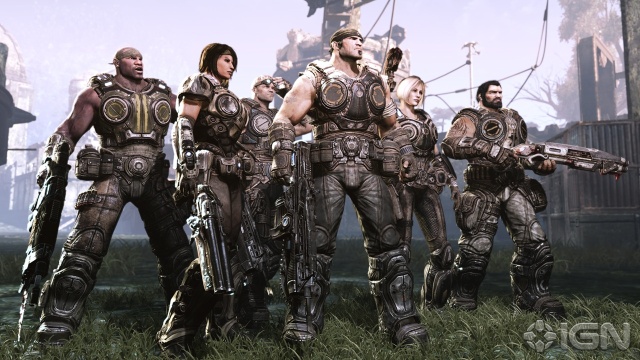
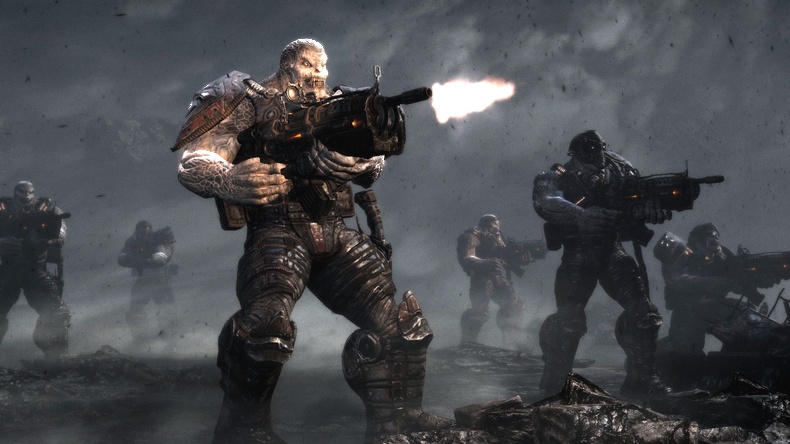
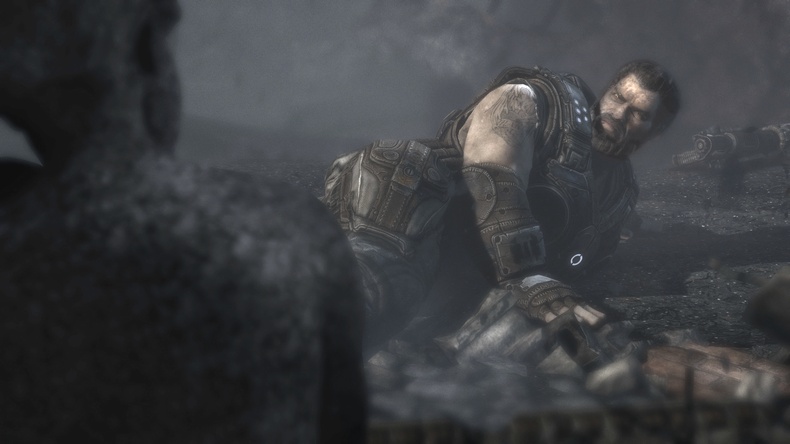
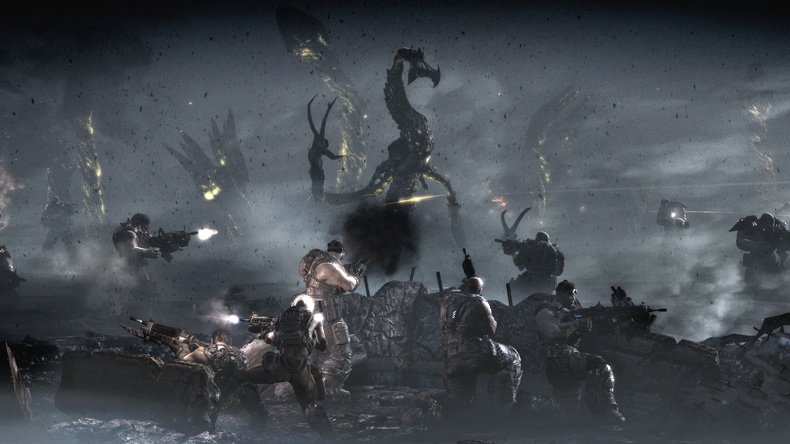
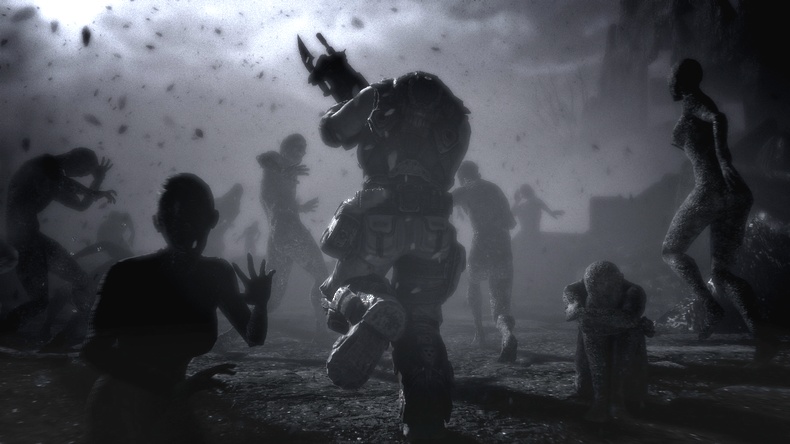
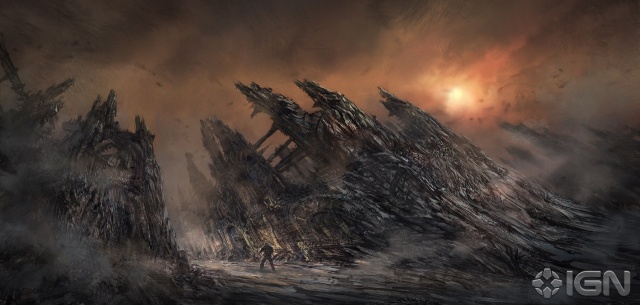


ola soi de mejico es el mejor juego del mundo luis angel pollo
“I think panerai replica watches he compared that to, was it to Pearl Harbor?” Romney said in comments to reporters during a stop yesterday in omega replicas New Hampshire before he headed to Iowa. “It’s more like Lucille Ball at the chocolate factory. I mean, you rolex replicas know, you got to get it organized.”